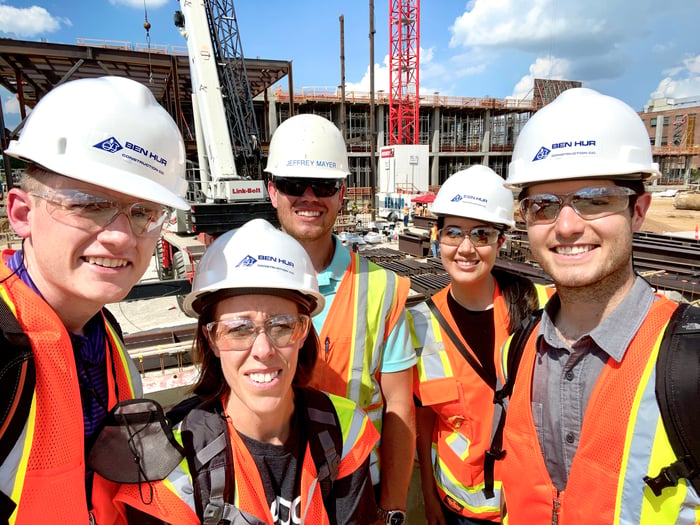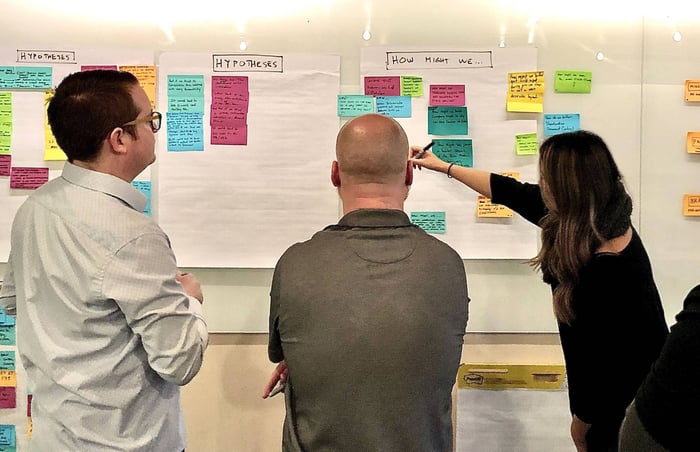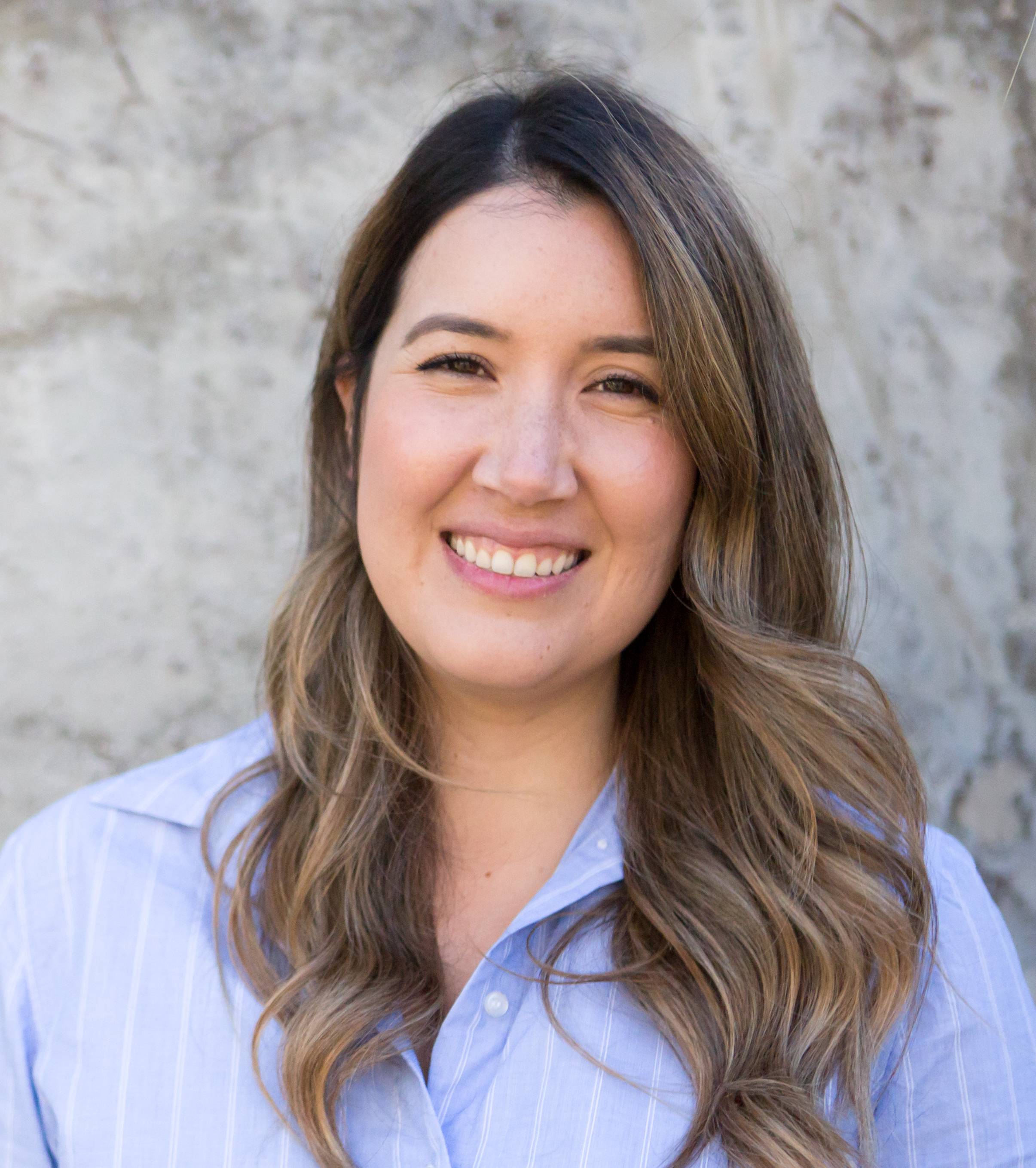The true spirit of Women in Construction Week is acknowledging all the smart, talented, hard-working women who make our industry run and help to build our world. Today we want to highlight the contributions of our colleague Sarah Vargas, DADO’s UI/UX Designer.
Sarah is one of many women in construction technology shaping the tools that are making our industry better and more efficient every day. We’ve asked her to tell us more about her role in tech, and her thoughts on diversity and inclusion in the construction industry.
1. What is your role at DADO?
I am a user experience designer at DADO. I work closely with product and development teams to design the interface for our mobile and web applications. Whether we’re designing a new feature or making changes to an existing one, it’s my job to advocate for our customers’ needs and ensure we create the best overall product experience.
2. How did you get started in your design career? Will you walk us through your path to DADO from architecture through to UX?
My design career actually started in architecture. I spent 5 years designing single- and multi-family housing, and then I decided to transition into UX design, and started working at DADO. Coming from a background in architecture was integral to being successful in my role at DADO.
As an architect, I understood how complex the construction industry can be, and was all too familiar with the inefficiencies of the process and the pain of managing all the different types of documentation.
I also gained a totally new perspective on construction: what it’s like to work with documents on jobsites. When you’re in the field, there are more issues, but also more opportunities to improve the overall process. It’s been vital for me to understand the user’s perspective on both process and documentation - both in the office and in the field.
After only a few months in my new role, I realized that my previous role was not so different. As an architect, I was manipulating physical space and materials to create experiences; now, I’m working with digital space. Both roles have the same goal: to solve problems and to design a high -quality interaction between a person and a product.
3. What does a UX designer typically do?
Have you ever been on a website and felt it was so hard or confusing to navigate that you just decided to give up? Or maybe you have a mobile app that’s so easy to use, you enjoy using it every day? That experience you have when you interact with a product is where UX designers come in. In a nutshell, it’s our job to make a product useful, intuitive, and enjoyable for you to use.
The UX designer’s role differs a little from company to company. At DADO, I focus on all aspects of a product’s development, including research, design, implementation, and even sometimes branding and marketing.
For every feature we work on, we typically start by looking at insights we’ve gathered from user research before we start designing a solution. This step is crucial to understanding our customers’ needs and identifying their goals and challenges in relation to the product. For example, that means really understanding what a foreman needs to fill out an RFI when they’re on a jobsite, or what a project manager needs to better manage and organize all their incoming RFIs.
After this phase, we start to generate ideas and develop concepts, which we’ll test to validate our designs. We’re fortunate that we continually get feedback from our customers, which helps us understand what works well, and what can be improved. This process is highly iterative, and I work closely with our engineers and product team members at every step to come up with the solutions to best serve our users.

4. How do you make design decisions regarding the DADO interface?
As a designer, you’re confronted with design decisions every day. Whether you’re defining the sequence of steps in a flow, selecting the layout of the navigation, or choosing the color of a button, there are so many factors that come into play. But staying focused on the problem and prioritizing the needs of the user helps to direct design in the right direction.
At DADO, our priority is to make sure we stay user-centric. Meeting the users’ needs is our first priority: helping them complete their tasks accurately and efficiently. This mindset is key when we make design decisions.
Collecting, analyzing, and properly using data is critical to creating good user experiences. Modern analytics tools and UX research methods allow us to collect significant data about our users and how they interact with our products or services - and this plays a significant role in our decision-making.
Keeping an open mindset and staying flexible throughout the creative process is also important. We often discover unforeseen issues or opportunities along the way that make us pivot or change paths.
Because we center our decisions around our customers at DADO, we always come back to some fundamental questions: Will this help the user complete their tasks? Was it simple and quick for them to use? This is what ultimately drives our decisions. After all, our goal is to help users, not cause more issues; to enable them to do their jobs better and spend more time on their core work, not using the software.
5. How do you work with DADO users to incorporate their suggestions about design changes into the UI?
We’re so lucky to have the opportunity to work with the customers we have at DADO. They’re willing to work with us to help us better understand what their needs are, so that we can make a product that meets them. We’re in constant contact with our customers, whether it’s a quick call, or an onsite visit. Staying in such close touch also helps us to prioritize and plan what to work on next.
During the early stages of DADO’s development, we invited prospective customers to join us in design workshops. Including potential users in brainstorming sessions with our engineering and product teams gave us invaluable feedback that directly influenced some of our first conceptual designs. So working closely with customers has been part of DADO’s DNA right from the start.

6. What impact do you think a designer’s identity has on UI/UX design? Why is it important to have a diverse design community in construction technology?
A designer’s identity and background have a huge impact on their design. Every designer perceives and interacts with technology differently, and brings a unique perspective and way to solve problems. For example, someone with an engineering background will have a different approach than someone from a psychology background.
Having a team with diverse points of view challenges the design process in a positive way, inspiring creativity and driving innovation. That’s what makes a product great: bringing uniue ideas together to find the best product or solution.
It’s important to have diversity in design because it generates different perspectives, and inspires more inclusive solutions that serve a more diverse community.
7. What advice would you give to a woman thinking about a career in construction?
Now more than ever, it’s a great time to get into construction. There’s definitely a perception that it’s a very male-oriented field, which can intimidate some women. But there’s a broad range of roles in the industry, and plenty of opportunity to move amongst them during your career. I’m a good example - while I started as an architect designing buildings, I’m now a UX designer creating software to help buildings get built.
I love knowing that my work has a positive impact on the built environment. Every day is different and challenging, which keeps me motivated and driven to learn more. Women play such a vital role in propelling this industry forward, and it’s our responsibility to encourage more women to explore all the career paths that construction has to offer.
Interested in joining Sarah and the rest of the DADO team? We're hiring!
CATEGORIES
- Construction Technology (23)
- Construction Document Management (14)
- Construction Document Search (13)
- DADO (8)
- Document Management Systems (8)
- Intelligent Search (6)
- Smart Forms (4)
- intelligent document search (4)
- File Search (3)
- Insider (3)
- Productivity (3)
- Search Engines (3)
- VDC (3)
- tech friction (3)
- Cost Control (2)
- Ctrl F (2)
- Customer Stories (2)
- Digital Process (2)
- Opinion (2)
- Risk Management (2)
- Smart Documents (2)
- Virtual Design and Construction (2)
- field (2)
- integrations (2)
- lean construction (2)
- safety compliance (2)
- Collaboration (1)
- DMS (1)
- IGI (1)
- OSHA (1)
- Optical Character Recognition (1)
- Project Management (1)
- Safety (1)
- TAUC (1)
- document administration (1)
- index documents (1)
- mechanical engineering (1)
- rework (1)
- voice driven (1)
Archives
- October 2020 (5)
- February 2021 (4)
- April 2021 (4)
- June 2021 (4)
- July 2021 (4)
- July 2019 (3)
- September 2020 (3)
- November 2020 (3)
- December 2020 (3)
- January 2021 (3)
- March 2021 (3)
- May 2021 (3)
- August 2021 (3)
- March 2022 (3)
- May 2022 (3)
- October 2021 (2)
- January 2022 (2)
- February 2022 (2)
- March 2020 (1)
- April 2020 (1)
- July 2020 (1)
- August 2020 (1)
- September 2021 (1)
- November 2021 (1)
- December 2021 (1)
- April 2022 (1)
- July 2022 (1)

